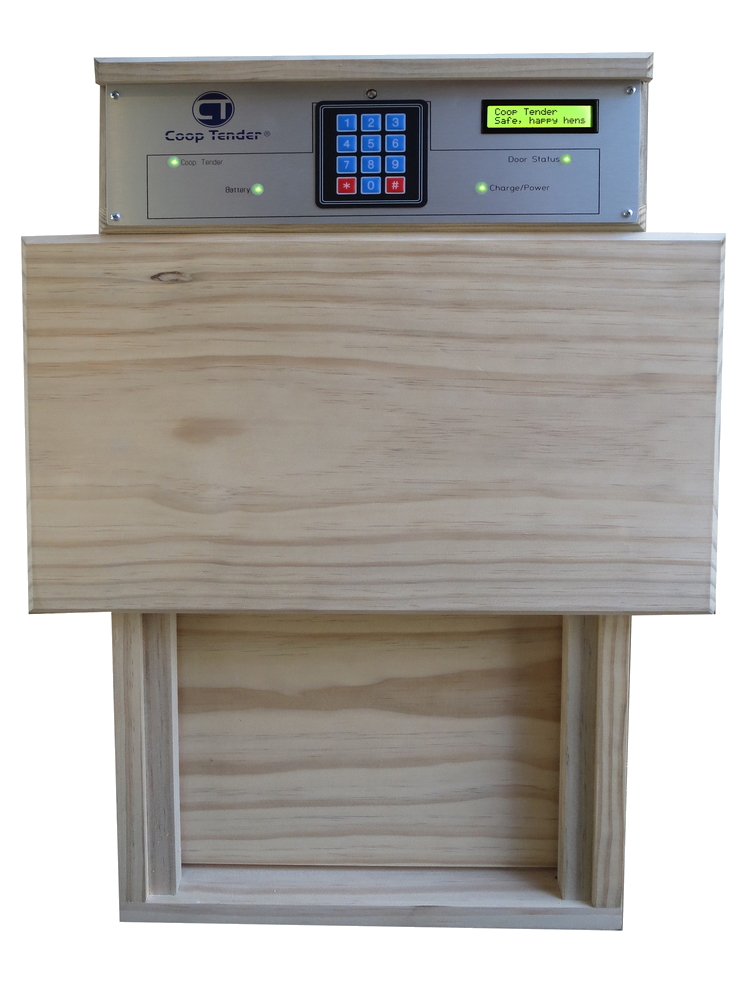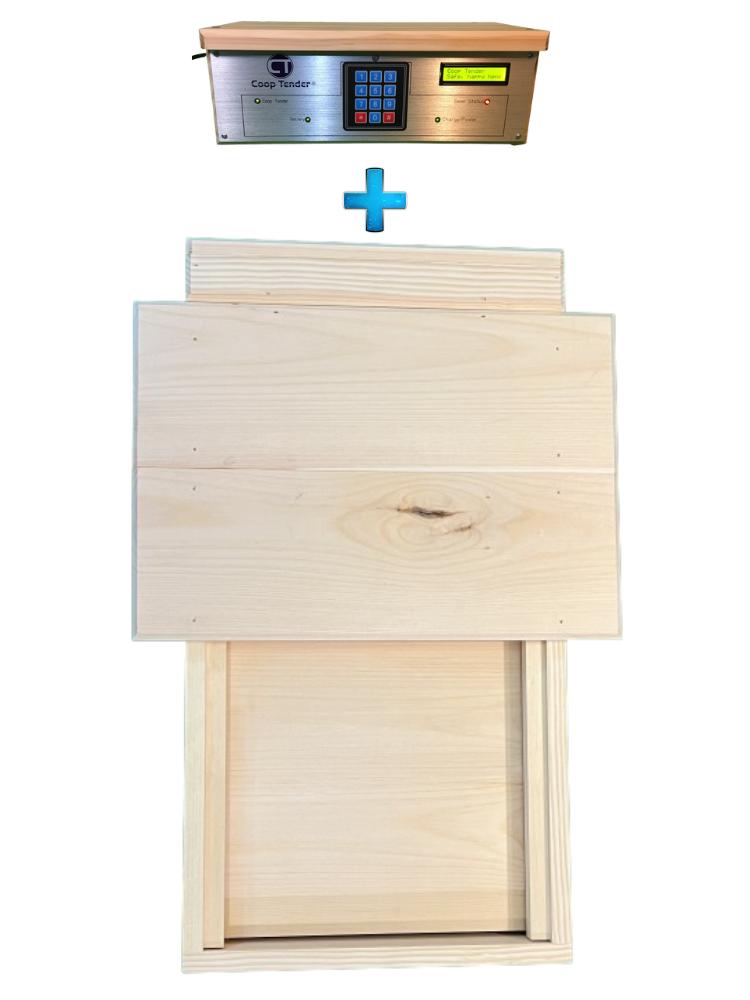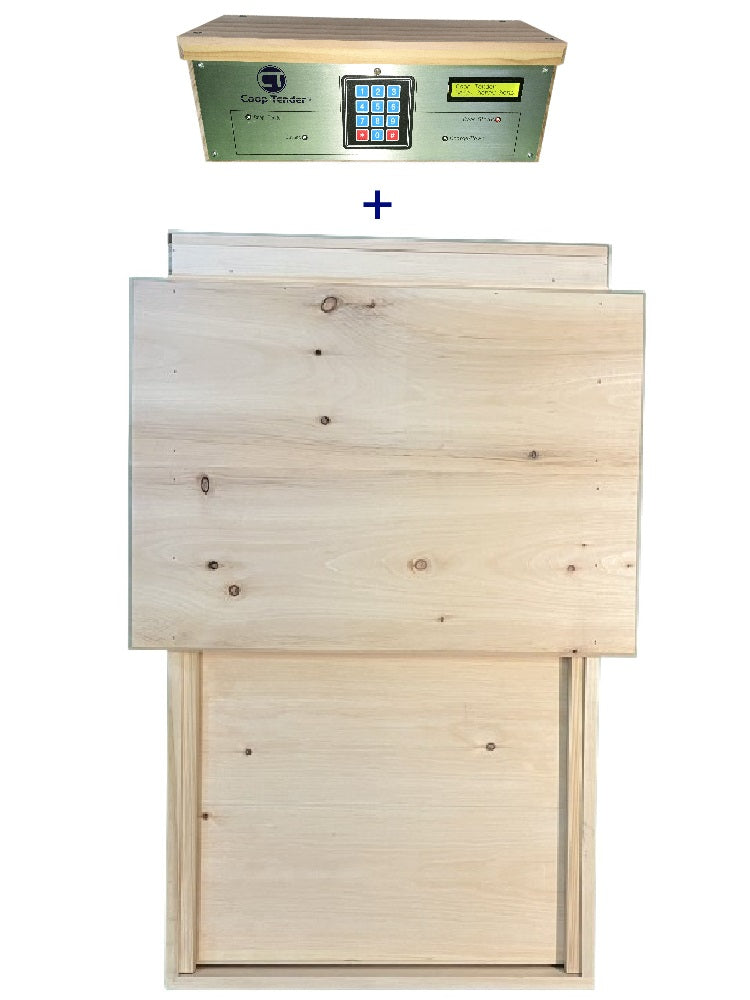Imagine stepping into your backyard, where the clucking of your happy hens fills the air, but without the daily hassle of manual coop management. Enter the automatic chicken coop door — a revolutionary solution that combines convenience with peace of mind. These innovative devices allow you to automate the opening and closing of your chicken coop, providing your feathered friends with safe access to the outdoors while you enjoy more free time. No more worrying about early mornings or late nights; with an automatic chicken coop door, you can unlock a new level of effortless coop management. Whether you’re a seasoned poultry keeper or just starting, this ultimate guide will equip you with everything you need to know about choosing, installing, and maintaining the perfect chicken coop automatic door. Join us as we explore the ins and outs of these smart solutions, ensuring your flock remains secure, healthy, and happy—all while you savor the simplicity of modern chicken-keeping!
Benefits of Using an Automatic Chicken Coop Door
The integration of a automatic chicken coop door into your coop management routine brings a plethora of advantages that go beyond mere convenience. One of the primary benefits is the automation of your coop’s daily schedule, which eliminates the need for manual opening and closing. This is particularly advantageous for those with busy lifestyles or multiple responsibilities, ensuring that your chickens are let out and secured at appropriate times without requiring your constant attention. The convenience of automation allows you to enjoy more free time while still tending to the needs of your feathered friends.
Moreover, an auto chicken door significantly enhances the security of your flock. These doors are designed to operate with precision, closing at dusk and opening at dawn, which helps protect your chickens from nocturnal predators such as raccoons, foxes, and owls. The reliability of an automatic system reduces the risk of human error, ensuring that your birds are safely tucked away every night. This added layer of security not only provides peace of mind but also contributes to the overall health and longevity of your flock.
Additionally, automatic chicken coop doors can contribute to the well-being and productivity of your chickens. By facilitating a consistent daily routine, your hens are less likely to experience stress, which can have a positive impact on their egg-laying performance. Regular access to the outdoors also allows chickens to engage in natural behaviors such as foraging and dust bathing, which are essential for their physical and mental health. The use of automatic doors for chicken coops can thus lead to happier, healthier chickens and a more efficient and enjoyable poultry-keeping experience for you.
How Automatic Doors for Chicken Coops Work
Understanding the mechanics behind automatic doors for chicken coops is essential for making an informed decision about their integration into your coop management system. Essentially, these doors operate through a combination of sensors, timers, and motors that work together to control the opening and closing mechanisms. The most common types use either light sensors or programmable timers to determine the optimal times to open and close the door, aligning with the natural behaviors and needs of chickens.
Light sensor-based doors rely on natural daylight to trigger their operation. These sensors detect the ambient light levels, opening the door at dawn and closing it at dusk. This method closely mimics the natural rhythms of your chickens, ensuring they have access to the outdoors during daylight hours while being safely enclosed at night. On the other hand, timer-based doors allow for more customization, as you can set specific times for the door to open and close according to your preference or your chickens' established routine.
The motorized mechanism of an automatic door for chicken coop is typically powered by either electricity or batteries. Electric models often come with a backup battery to ensure continued operation during power outages. Battery-powered models offer greater flexibility in placement, as they do not require proximity to an electrical outlet. Regardless of the power source, the motor is designed to provide smooth and reliable operation, capable of lifting and lowering the door without causing harm to your birds. Understanding these components and how they work together can help you choose the right automatic chicken coop door for your coop.
Types of Automatic Chicken Doors
When it comes to selecting the right chicken coop automatic door, you'll find a variety of types available, each with its unique features and benefits. The two main categories are vertical sliding doors and horizontal sliding doors. Vertical sliding doors, also known as guillotine doors, move up and down within a track and are often preferred for their simplicity and ease of installation. These doors are typically less prone to jamming and offer a straightforward solution for automatic coop management.
Horizontal sliding doors, on the other hand, move side to side and can be a great option for coops with limited vertical space. These doors often come with a more robust construction, making them a good choice for areas with high predator activity. The horizontal movement can also be beneficial in preventing debris from interfering with the door's operation, ensuring a smooth and reliable performance. Both types offer effective solutions, and the choice ultimately depends on the specific layout and requirements of your coop.
Additionally, there are advanced models that incorporate smart technology, allowing for remote control and monitoring via smartphone apps. These models often come with additional features such as integrated cameras, weather sensors, and alerts to notify you of the door's status. While these high-tech options come at a higher price point, they offer unparalleled convenience and control, making them ideal for tech-savvy poultry keepers who want to stay connected to their flock from anywhere. By understanding the different types of automatic chicken doors, you can make a well-informed decision that best suits your needs and enhances your coop management experience.
Key Features to Look for in an Automatic Chicken Coop Door
When shopping for an automatic chicken coop door, several key features should be considered to ensure you choose the best option for your coop and flock. Durability is paramount, as the door will be exposed to various weather conditions and potential wear and tear. Look for doors made from high-quality materials such as solid wood lumber or heavy-duty plastic, which offer resistance to rust, corrosion, and impacts. A durable door will provide long-lasting performance and protect your chickens from potential predators.
Ease of installation is another critical factor to consider. Many chicken coop automatic door come with comprehensive installation kits and detailed instructions, making them suitable for DIY enthusiasts. However, some models may require more technical knowledge or professional installation. Opt for a door that matches your skill level and available tools to ensure a smooth setup process. Additionally, consider the compatibility of the door with your existing coop design to avoid any modifications that could complicate the installation.
Power options and battery life are also essential considerations. Some automatic doors for chicken coops are powered by electricity, while others use batteries or even solar panels. Battery-powered models offer greater flexibility and can be particularly useful in areas without easy access to electrical outlets. Ensure that the door you choose has a reliable power source and, if using batteries, check the battery life and availability of replacements. Backup power options, such as a secondary battery or manual override, are also valuable features that can prevent disruptions in case of power failures.
Installation Guide for a Chicken Coop Chicken Door
Installing a chicken coop chicken door can seem daunting, but with the right tools and instructions, it can be a straightforward process. Begin by selecting an appropriate location for the door on your coop. The chosen spot should allow easy access for your chickens while providing protection from the elements and predators. Mark the area where the door will be installed, ensuring it aligns properly with the coop's existing structure.
Next, prepare the installation site by cutting an opening in the coop wall if necessary. Use a jigsaw or similar tool to create a clean, precise cut that matches the dimensions of the door. Once the opening is ready, position the door frame and secure it in place using screws or bolts. Ensure the frame is level and properly aligned to prevent any operational issues. If your door comes with a mounting template, use it to guide the placement of screws and other hardware.
After securing the door frame, attach the door itself and connect any necessary power sources. For electric models, plug the door into an electrical outlet and ensure the wiring is safely routed to prevent damage. For battery-powered or solar models, insert the batteries or position the solar panel in an area with adequate sunlight. Finally, test the door's operation by activating the sensors or timers. Make any necessary adjustments to ensure smooth and reliable performance before allowing your chickens to use the door. With careful installation, your chicken coop automatic door will provide effortless and reliable coop management for years to come.
Maintenance Tips for Long-lasting Performance
To ensure your automatic chicken door continues to operate smoothly and reliably, regular maintenance is essential. Start by routinely inspecting the door and its components for any signs of wear or damage. Check the door tracks, hinges, and seals for debris, rust, or corrosion that could impede its operation. Cleaning these parts regularly with a soft brush and mild detergent can prevent buildup and prolong the door's lifespan.
Lubrication is another crucial aspect of maintenance. Apply a silicone-based lubricant to the moving parts of the door, such as the tracks and hinges, to ensure smooth operation. Avoid using oil-based lubricants, as they can attract dust and debris, leading to potential malfunctions. Lubricate the door at least once a month or more frequently if you notice any stiffness or resistance during operation.
Additionally, monitor the power source to ensure consistent performance. For battery-powered doors, check the battery levels regularly and replace them as needed. If opt for a solar powered chicken coop door, clean the solar panel to remove any snow, dirt or debris that could obstruct sunlight and reduce efficiency. Keeping the power source in optimal condition will prevent unexpected power failures and ensure your door operates reliably. By following these maintenance tips, you can extend the life of your chicken coop automatic door and enjoy hassle-free coop management.
Common Issues and Troubleshooting
Despite their convenience, automatic doors for chicken coops can sometimes encounter issues that require troubleshooting. One common problem is the door failing to open or close at the designated times. This issue can often be traced back to a malfunctioning sensor or timer. Start by checking the settings and recalibrating the sensors or timers as needed. Ensure that the sensors are clean and free from obstructions that could affect their accuracy.
Another frequent issue is the door jamming or getting stuck during operation. This can be caused by debris in the tracks, misalignment of the door, or worn-out components. Inspect the tracks and clear any obstructions, then check the alignment of the door and adjust it if necessary. If the problem persists, examine the moving parts for signs of wear and replace any damaged components to restore smooth operation.
Power-related issues can also affect the performance of your auto chicken door. If the door is not receiving power, check the power source and connections. For battery-powered models, ensure the batteries are properly installed and have sufficient charge. For electric models, verify that the door is plugged in and that the outlet is functioning correctly. If you experience frequent power outages, consider installing a backup power source to maintain continuous operation. By addressing these common issues promptly, you can ensure your chicken coop door remains a reliable and effective tool for coop management.
Cost Analysis: Manual vs. Automatic Chicken Door
When considering the investment in a chicken coop automatic, it's important to conduct a cost analysis to understand the financial implications compared to manual doors. Manual chicken doors are typically less expensive upfront, with prices ranging from $20 to $50 depending on the materials and design. However, they require daily manual operation, which can be time-consuming and inconvenient, especially for those with busy schedules.
In contrast, automatic doors for chicken coops have a higher initial cost, usually between $200 and $400 depending on the features and quality. Despite the higher upfront expense, an automatic chicken door offers significant long-term savings in terms of time and effort. By automating the daily opening and closing of the coop, you can reduce the need for manual labor and enjoy the convenience of a hands-free solution. This can be particularly beneficial for individuals who value their time or have other commitments that make daily coop management challenging.
Additionally, the enhanced security provided by a chicken coop automatic door can prevent potential losses due to predator attacks, which can be costly in terms of both financial investment and emotional toll. The peace of mind that comes with knowing your chickens are safe and secure is invaluable. When factoring in these long-term benefits and savings, the investment in a chicken coop door can be a cost-effective and worthwhile decision for many poultry keepers. By weighing the costs and advantages, you can make an informed choice that aligns with your priorities and enhances your overall coop management experience.
Conclusion: Enhancing Coop Management with Automation
In conclusion, the integration of an automatic chicken door into your coop management routine offers a multitude of benefits that can transform the way you care for your flock. From the convenience of automated daily operations to the enhanced security and well-being of your chickens, these innovative devices provide a modern solution to traditional poultry-keeping challenges. By understanding the various types of automatic doors, their key features, and proper installation and maintenance practices, you can make an informed decision that best suits your needs.
The investment in an automatic chicken door not only saves you time and effort but also contributes to the overall health and happiness of your chickens. The consistent routine facilitated by these doors reduces stress and promotes natural behaviors, leading to a more productive and content flock. Additionally, the peace of mind that comes with knowing your chickens are protected from predators allows you to enjoy poultry-keeping without the constant worry of potential threats.
As you explore the options and consider the benefits of automatic doors for chicken coops, remember that the ultimate goal is to create a secure and comfortable environment for your feathered friends while simplifying your daily responsibilities. With the right chicken coop door, you can unlock a new level of convenience and efficiency in coop management, making it an enjoyable and rewarding experience for both you and your chickens. Embrace the future of poultry-keeping with confidence, knowing that automation can enhance your coop management and provide a better quality of life for your beloved flock.







Leave a comment